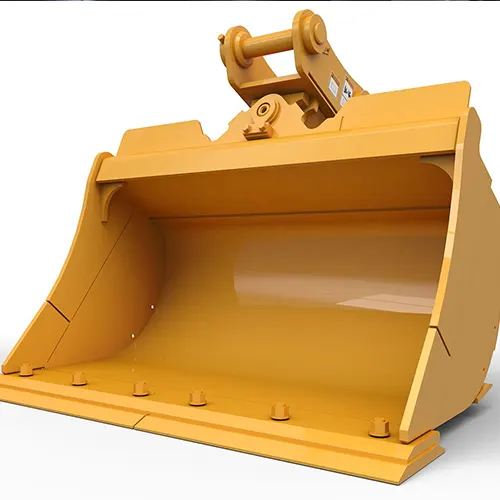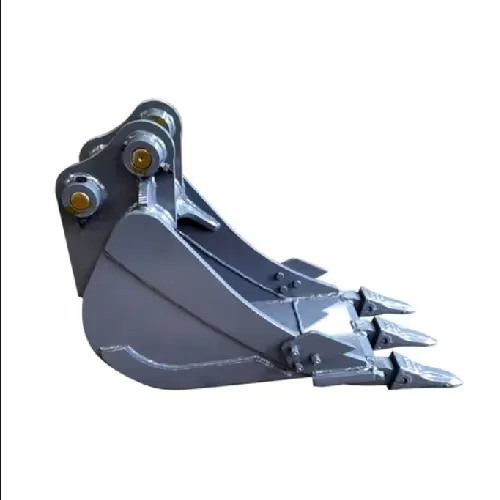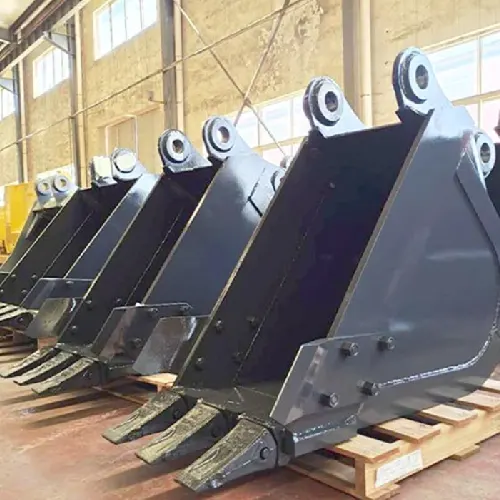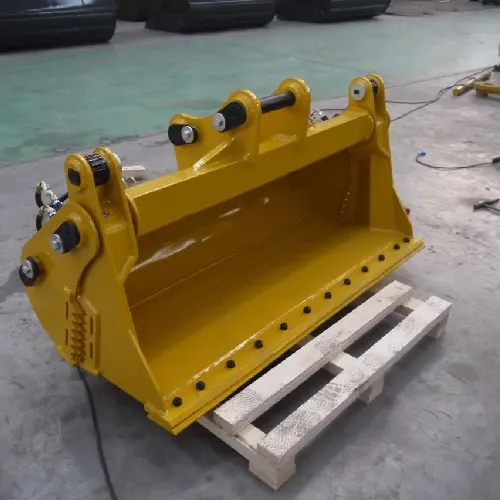Table of Contents
As the backbone of any excavation project, the excavator bucket plays a critical role in determining efficiency, productivity, and overall success. Whether you’re working on a small landscaping job or a large – scale mining operation, selecting the right bucket is essential. In this guide, we’ll explore the key factors to consider when choosing an excavator bucket, helping you make an informed decision that aligns with your project needs.
1. Understand the Different Types of Excavator Buckets
Excavator buckets come in various designs, each engineered for specific tasks. Here are the most common types:
General – Purpose Buckets

- Description: Also known as “mud buckets,” these are the most versatile option, suitable for everyday digging, loading, and grading tasks in soft to medium – density materials like soil, gravel, or sand.
- Key Features: Moderate side cutting edges, flat bottom, and a balanced design for efficient material handling.
- Ideal For: Residential construction, agricultural projects, and general site preparation.
Heavy – Duty Buckets
- Description: Built for tough conditions, heavy – duty buckets are designed to handle abrasive materials such as rocks, concrete, and hard clay.
- Key Features: Reinforced wear plates, thicker side walls, and robust teeth (or teeth adapters) to withstand high impact and friction.
- Ideal For: Mining, quarrying, and demolition projects where durability is paramount.
Trenching Buckets

- Description: Narrow and deep, trenching buckets are designed to create precise, vertical trenches for pipelines, cables, or drainage systems.
- Key Features: Straight side walls, sharp cutting edges, and often a pointed tip for accurate digging in confined spaces.
- Ideal For: Utility installation, roadworks, and infrastructure projects requiring narrow excavations.
Rock Buckets

- Description: Specifically engineered for breaking up and handling large, jagged rocks.
- Key Features: Heavy – duty construction with reinforced lips, robust teeth, and sometimes a curved design to improve penetration and material retention.
- Ideal For: Mountainous terrain, rock quarries, and projects involving hard, uneven surfaces.
Multi – Purpose Buckets

- Description: A hybrid design that combines features of general – purpose and heavy – duty buckets, offering flexibility for mixed – material projects.
- Key Features: Adjustable teeth, replaceable wear parts, and a versatile shape for both digging and loading.
- Ideal For: Projects with varying material densities, such as urban construction sites with a mix of soil and debris.
2. Consider Bucket Size and Capacity
The size of your excavator bucket directly impacts its performance and compatibility with your machine. Here’s what to keep in mind:
Bucket Capacity
- Measured in cubic meters (m³) or cubic yards (yd³), bucket capacity refers to the volume of material the bucket can hold per cycle.
- Rule of Thumb: Match the bucket capacity to your excavator’s lifting capacity and engine power. A bucket that’s too large can strain the machine, while one that’s too small will reduce productivity.
Bucket Width and Depth
- Width: Determines the width of the excavation or the material spread. Narrow buckets (e.g., 600mm) are ideal for trenching, while wider buckets (e.g., 1200mm) are better for bulk loading.
- Depth: Affects the bucket’s ability to penetrate hard materials. Deeper buckets are suitable for digging, while shallower ones are better for loading and grading.
3. Material and Construction Quality
The durability of your excavator bucket depends on the materials used in its construction. Common materials include:
Mild Steel
- Pros: Cost – effective, suitable for general – purpose tasks in non – abrasive environments.
- Cons: Prone to wear in harsh conditions.
High – Strength Steel (e.g., Hardox®)
- Pros: Exceptionally resistant to abrasion and impact, ideal for heavy – duty applications.
- Cons: Higher initial cost but offers long – term savings through extended lifespan.
Wear Plates and Teeth
- Look for buckets with replaceable wear plates on the cutting edge and bucket floor, as well as durable teeth (e.g., carbide – tipped teeth) for improved penetration and reduced maintenance.
4. Compatibility with Your Excavator
Ensure the bucket is compatible with your excavator’s attachment system:
Quick – Couplers
- Most modern excavators use quick – couplers to switch between buckets and other attachments (e.g., grapples, hammers) quickly. Verify that the bucket is compatible with your machine’s coupler type (e.g., hydraulic or mechanical).
Pin – Size and Mounting
- The bucket’s pin size and mounting brackets must match your excavator’s arm and stick specifications to ensure a secure and stable connection.
5. Optimize for Efficiency and Safety
Weight Balance
- A well – balanced bucket reduces stress on the excavator’s hydraulic system and improves fuel efficiency. Avoid buckets that are overly heavy for your machine’s capabilities.
Safety Features
- Look for buckets with reinforced lifting eyes, secure locking mechanisms, and clear visibility from the operator’s cab to minimize accidents during operation.
6. Stay Ahead of Industry Trends
Customization
- Many manufacturers offer customizable buckets to meet specific project requirements, such as specialized coatings for corrosion resistance or unique shapes for niche applications.
Sustainability
- With growing environmental awareness, consider buckets made from recycled materials or designed for minimal soil spillage to reduce waste and environmental impact.
Conclusion
Choosing the right excavator bucket is a strategic decision that can significantly impact your project’s efficiency and cost – effectiveness. By understanding the different types, sizing requirements, material options, and compatibility factors, you’ll be able to select a bucket that maximizes performance while minimizing downtime and maintenance costs.
For more insights on construction equipment and best practices, explore our blog regularly or contact our team for personalized recommendations.
About Yantai HLW
If you need any excavator or its related buckets and other spare parts, please feel free to contact us. We are a professional supplier of wheel loaders, excavators and related spare parts.
